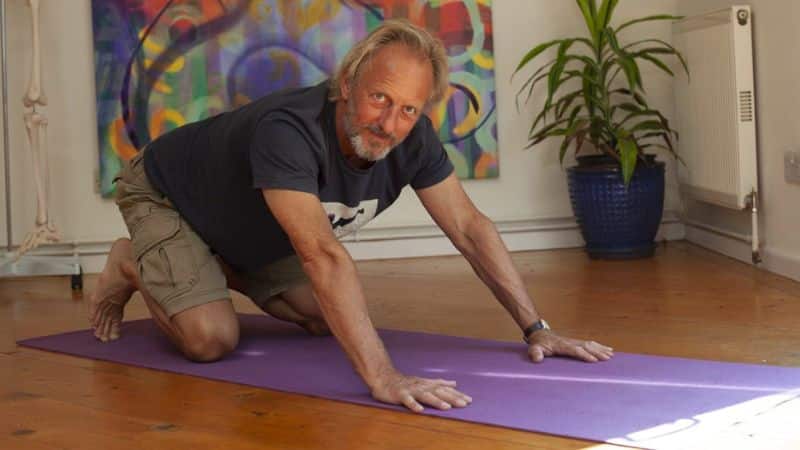
**Embodying Your Being: The Heart of Somatic Yoga and Mindful Awareness**
What does it signify to genuinely embody your being? To be entirely present in the current moment, to acknowledge each heartbeat, every breath, and all sensations that emerge within you? Contemporary life frequently pulls us in various directions simultaneously—toward checklists, digital screens, responsibilities, and distractions. Yet amid the turmoil of the outside world, there lies a profound opportunity for connection: the ability to wholly inhabit our bodies, engage with the present, and re-establish a sense of harmony both physically and emotionally. This journey is central to Somatic Yoga—a transformative practice that blends mindfulness, movement, and awareness to forge a path for healing and self-awareness.
### What is Somatic Yoga?
Somatic Yoga is far from your typical vigorous or sweat-inducing exercise. Unlike many conventional forms of yoga that stress achieving set poses or external balance, Somatic Yoga emphasizes fostering a deeper awareness of internal sensations. It invites you to listen to your body from within, becoming attuned to how you move, breathe, and feel in the immediate moment.
Anchored in somatic practices (from the Greek word “soma,” which means “living body”), this form of yoga guides us to reconnect with our sensory and motor awareness. Rather than forcing through discomfort or seeking perfection, Somatic Yoga fosters compassionate exploration. It emphasizes gentle, mindful movements that alleviate physical tension, awaken neural pathways, and encourage relaxation.
### Why is Being “In Your Body” Crucial?
For many individuals, the rush of daily life disconnects us from our physical selves. Spending hours seated at a desk can dull our sensitivity to feelings of stiffness or discomfort. Stress may cause us to hold our breath or tense our muscles without even being aware of it. On an emotional level, trauma or challenging experiences can lead to disengagement—a protective numbing of bodily sensations.
Over time, such disconnection can manifest as chronic tension, pain, and even a sense of disassociation or exhaustion. Being fully embodied, conversely, enables us to engage with life more vibrantly. It helps in recognizing our needs (whether for rest, nourishment, or movement), enhances resilience, and fosters healing.
Somatic Yoga instructs us to completely inhabit our bodies by centering attention on gentle, mindful exploration of sensations. Through this practice, we can restore equilibrium between our minds and bodies, dismantling patterns of disconnection and nurturing self-awareness.
### Core Principles of Somatic Yoga
Even if Somatic Yoga isn’t a routine you plan to fully integrate, weaving some of its principles into your daily life can yield significant changes. Here are the essential components of Somatic Yoga:
1. **Mindfulness: Being Aware of the Current Moment**
Engaging in Somatic Yoga requires you to direct full attention to the sensations within your body and your experiences at the moment. This may involve observing the sensation of your feet on the floor, the expansion and contraction of your ribcage with each breath, or even the subtle tension in your jaw or shoulders. Mindfulness anchors you to the present, allowing you to witness life as it unfolds, rather than getting lost in thoughts of the past or future.
2. **Deliberate, Slow Movement**
Somatic Yoga highlights slow, intentional movements aimed at releasing tension and enhancing awareness of your body’s motions. These movements frequently focus on areas prone to habitual tension, such as the neck, shoulders, lower back, or hips. By moving slowly, you afford your nervous system the chance to identify and release unnecessary holding patterns.
3. **Reclaiming Your Inner Authority**
In Somatic Yoga, there are no external “targets” or ideal poses to attain. Instead, the emphasis is on uncovering what feels right for your individual body. This method nurtures self-empowerment, encouraging you to heed your body’s signals rather than overriding pain or discomfort.
4. **Breathing as an Awareness Tool**
Your breath serves as the link between your mind and body. Somatic Yoga significantly emphasizes conscious breathing, utilizing it to anchor you in the present moment and during movement. Awareness of your breath can also illuminate areas of tension and direct you toward release.
5. **The Connection Between Mind and Body**
Somatic Yoga recognizes the profound link between the physical body, thoughts, and emotions. Through practice, individuals often realize that engaging with the body can assist in releasing emotional habits or addressing past traumas held physically.
### Everyday Practices to Incorporate
Even if Somatic Yoga as a consistent practice isn’t your preferred choice, numerous principles and exercises can seamlessly fit into a hectic lifestyle. Here are several simple methods to enjoy the advantages:
– **Body Scan Meditation:** Dedicate five minutes to sit quietly and scan your body from